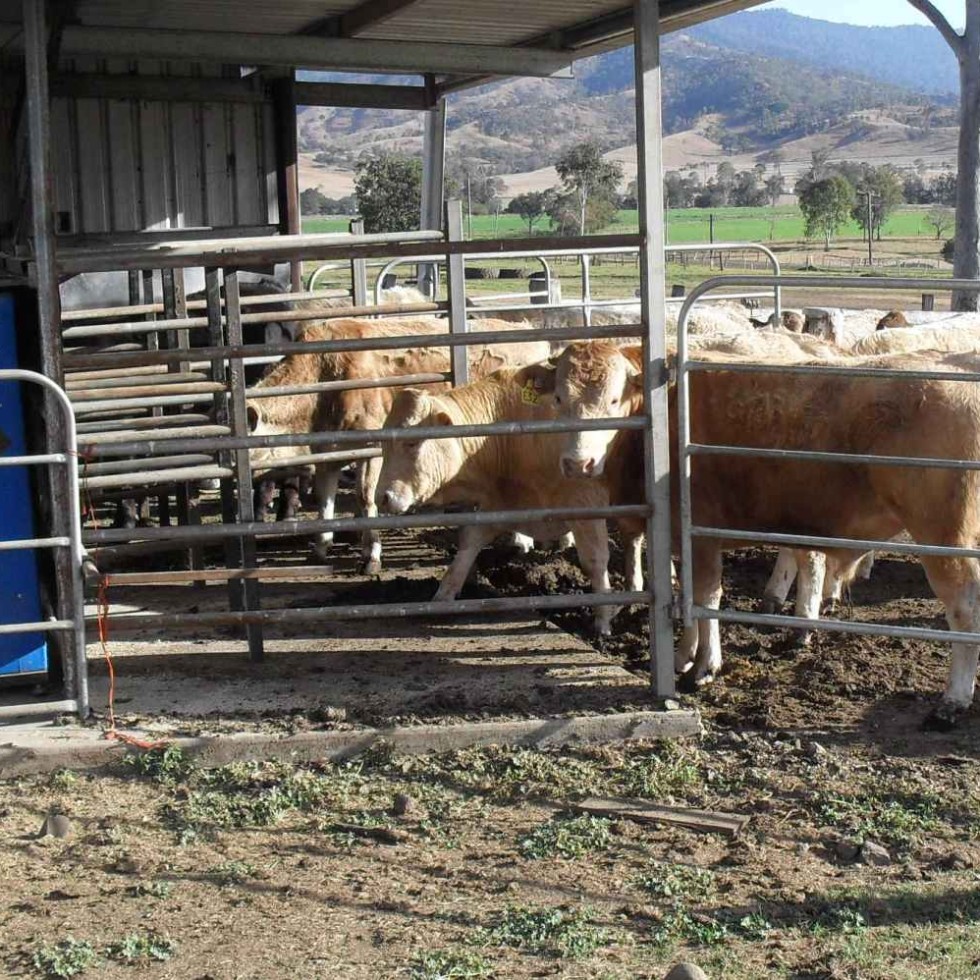 A cattle feed conversion testing station initiated, designed and built by two southeast Queensland beef producers has received a significant statewide environmental award.
A cattle feed conversion testing station initiated, designed and built by two southeast Queensland beef producers has received a significant statewide environmental award.
Rathdowney producers Matthew Arkinstall and Warren Drynan are the people behind the creation of a feed efficiency test facility at the Drynan family property, Running Creek, designed to improve sustainable beef production.
The project last week received acknowledgement during the Queensland Water and Land Carers’ 2011 Landcare Awards ceremony at Government House. It received the Australian Government award for Innovations in Sustainable Farming Practices.
The project involved the design and development of systems and software to individually record and calculate cattle feed intakes under controlled conditions, in order to identify more efficient cattle for use in seedstock development.
A series of successful feeding trials have been held at in the testing station at the Drynan family’s Glenapp feedlot at Running Creek. The infrastructure includes a highly modified feed trough, weighing scales, a data-logging system, and gates and barricade fencing to control the cattle access to the trough.
The preliminary findings have so far demonstrated that there is a large variation in net feed efficiency (conversion of feed eaten to body weight) within the breeds that have been trialled.
“The problem is that it’s impossible to tell the difference between efficient converters and inefficient ones, just by looking at them,” Mr Arkinstall said.
“Breeding cattle with the genetics predisposed to greater feed conversion efficiency, means they will eat less to gain the same or more weight. Although this has always been the aim among cattle breeders, this research provides an insight into a new and more sustainable way of how this can be achieved,” he said.
With further funding, the pair hope to expand and continue this research to produce more robust results that could have positive implications for the beef industry, from a climate change perspective. They are also looking at developing the system for more remote use.
“By using efficient bulls, producers can improve the feed efficiency of their progeny each year, and this has already been proven to reduce methane gas emissions from livestock,’’ Mr Arkinstall said.
"Under the new Carbon Farming Initiative, these producers will be able to claim credits for the reduction in emissions, which in large herds, and with continued use of efficient sires, can equate to an unlikely source of income,” he suggested.
The feed testing station has already been used to gauge performance within the Arkinstall’s Blonde d’Aquitaine seedstock herd, and the Drynan’s crossbred herd (mostly Santa and Charolais influenced), plus young bulls from other breeders.
The facility uses three pens with the capacity to test about 35 head at a time, with three intakes each year. There are 30 bulls in the final stages of the current trial, which will potentially carry the NFCE performance results through to sale data.
First trial results
Results from the first feeding trial concluding late last year showed individual efficiencies ranging from 3.62:1 to 8.5:1. All animals gained in excess of 2kg/day, with the best at 3.09kg/day, based on a 77-day test.
The early results identified standout performers, including one young Blonde bull which placed second overall for FCR and first for weightgain. He is being used this year over Rathdowney Blondes’ maiden heifers.
“An important note is that there is as much difference within herds as there is between breeds,” Mr Arkinstall said.
“In both instances, the worst for feed efficiency is about 50pc worse than the best animal from the same cohort. The least efficient Blonde was also the fattest, which is not surprising.”
The results reinforced the message that Blonde d’Aquitaines are one of the best performing beef cattle breeds for feed efficiency, he said.
“With feed efficiency having a heritability of about 0.42 (1.0 being perfect), it is one of the most highly heritable traits that studmasters can easily breed into their herds, by using bulls of known performance,” he said.
Matthew and Warren will now go on to represent Queensland at the National Landcare awards to be held in Sydney next year.
-
Seed capital for the original project development was committed through an environmental sustainability fund driven by retail supermarket group, Woolworths.



HAVE YOUR SAY